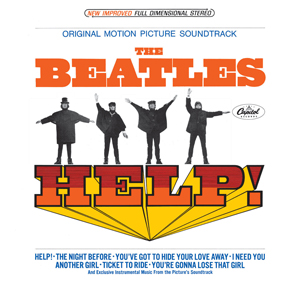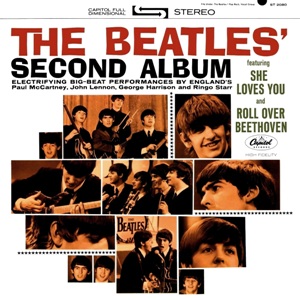While several tracks had appeared as singles prior to the album’s release, their inclusion here enhances the overall quality. “Welcome To The Working Week” is something of an overture, crashing into place and setting the stage, followed by the musically diverse romantic commentaries of “Miracle Man” and “No Dancing”. “Blame It On Cain” is nice and bouncy with a good singalong chorus, despite the abstract lyrics. “Alison” remains a tender favorite to this day, extraneous guitar lines notwithstanding, and undoubtedly causing discomfort for countless women finding themselves the object of unwanted lust. After that, the pub rock of “Sneaky Feelings” is a mild letdown. (On the US LP, the striking “Watching The Detectives” single closed side one, channeling television through white reggae.)
Opening side two, “(The Angels Wanna Wear My) Red Shoes” is another terrific singalong with mildly impenetrable lyrics and a chiming backing. The anti-fascist “Less Than Zero” would confuse many American listeners, prompting a new set of surreal verses for that audience’s benefit down the road. “Mystery Dance”, with its retro-rock feel and itchy mood, remains one of the best commentaries on sexual education and the lack thereof. The pub rock sound returns on “Pay It Back”, and “I’m Not Angry” is the very definition of irony, musically and lyrically. The surreal train journey in “Waiting For The End Of The World” nicely bookends the album.
My Aim Is True is a strong debut for what would be a varied career. Nick Lowe’s production balances the vocals and backing well, though one still wishes for the tighter sound the Attractions would bring to his later albums.
The album has now been reissued three times, with varying success. The Rykodisc version had the same sequence as the UK LP, with “Watching The Detectives” at the end. A hyped gap of silence set up the bonus tracks, starting with the “Radio Sweetheart” B-side and the countrified “Stranger In The House”, originally released as a giveaway single. The rest of the program consisted of what the compilers termed “pre-professional” recordings. First there’s “Imagination (Is A Powerful Deceiver)”, a crooner recorded with early band Flip City, followed by six songs recorded in his bedroom. Along with early versions of “Mystery Dance” and “Blame It On Cain”, the otherwise unreleased but excellent “Cheap Reward”, “Jump Up”, “Wave A White Flag”, and “Poison Moon” provide a peek into his development as a songwriter, as various lyrics would be recycled down the road.
When Rhino took over the catalog, it was one of the first albums to be expanded again. This version offered the original LP (plus “Detectives”) on one disc, with the nine extra Ryko tracks on the other, along with early versions of two songs that would be on his next album, and two key live performances: his cover of Bacharach and David’s “I Just Don’t Know What To Do With Myself” and a rewrite of “Less Than Zero”.
Only six years later the Hip-O label gave it another “Deluxe Edition” in the form of yet another two-CD set. This time the LP plus “Detectives” were followed by four so-called “outtakes” (but none of the “pre-professional” recordings) from the Rhino version, and eight unreleased demos. Four would be redone for the album, but “Blue Minute”, “Call On Me”, “I Don’t Want To Go Home”, and “I Hear A Melody” were new to most ears. The second disc contained a complete 1977 concert, with selections from the soundcheck, including songs yet to be recorded, and performed by Elvis with his new band, the Attractions, of whom we would be hearing lots, lots more. (We also hear a lot of their backing vocals, which would not become a staple of their shows.) This Deluxe Edition is recommended for diehards who don’t mind buying the album an additional time, but the “pre-professional recordings” on the Ryko and Rhino versions make them preferable.
Elvis Costello My Aim Is True (1977)—4
1993 Rykodisc: same as 1977, plus 9 extra tracks
2001 Rhino: same as 1993, plus 4 extra tracks
2007 Hip-O Deluxe Edition: same as 1977, plus 35 extra tracks

:format(webp):mode_rgb():quality(90)/discogs-images/R-7866854-1575387079-8072.jpeg.jpg)
:format(webp):mode_rgb():quality(90)/discogs-images/R-962004-1378311277-1598.jpeg.jpg)



